Write a MATLAB Program
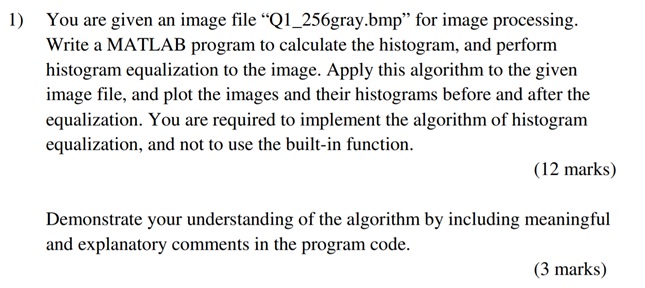
image=imread('Q1_256gray.bmp');% read image
%calculate image histogram
hist_1=zeros(256,1);
for i=1:size(image,1)
for j=1:size(image,2)
hist_1(image(i,j)+1)=hist_1(image(i,j)+1)+1;
end
end
result=[];
temp=0;
%calculate histogram equalization
for i=1:256
temp=hist_1(i)+temp;
result(i)=round((temp/(size(image,1)*size(image,2)))*255);
end
image_result=[];
%calculate result image
for i=1:size(image,1)
for j=1:size(image,2)
image_result(i,j)=result(image(i,j)+1);
end
end
hist_2=zeros(256,1);
for i=1:size(image,1)
for j=1:size(image,2)
hist_2(image_result(i,j)+1)=hist_2(image_result(i,j)+1)+1;
end
end
image_result=mat2gray(image_result);
%show all images
subplot(2,2,1);
imshow(image);
title('Image');
subplot(2,2,3);
plot(0:1:255,hist_1);
title('Image_hist');
subplot(2,2,2);
imshow(image_result);
title('Result');
subplot(2,2,4);
plot(0:1:255,hist_2);
title('Result_hist');
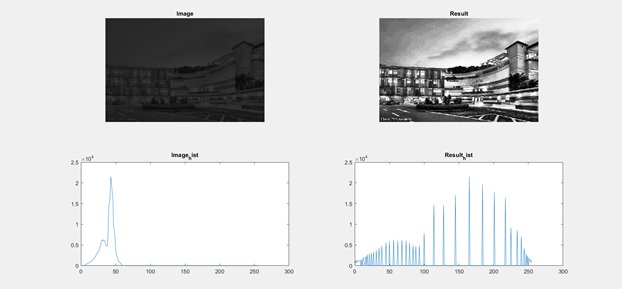
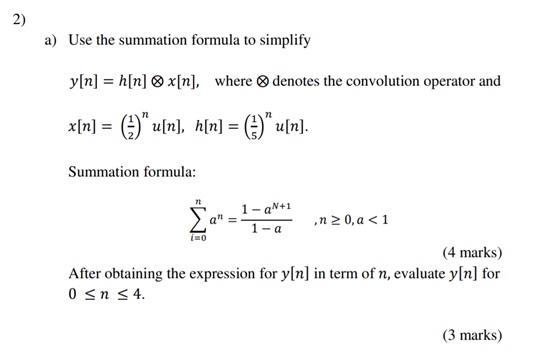
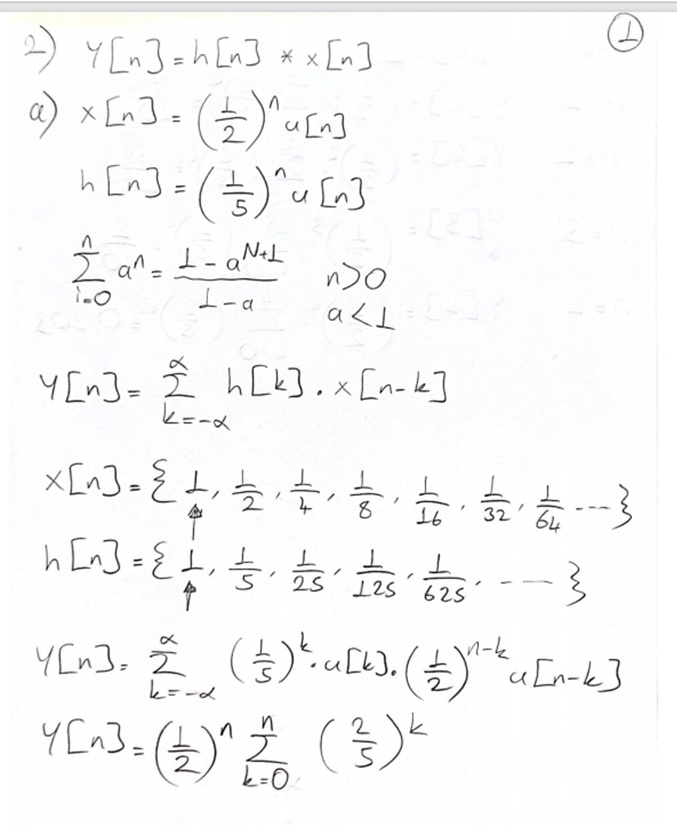
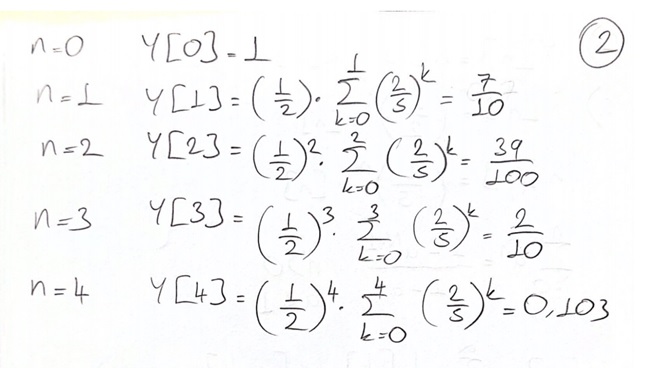
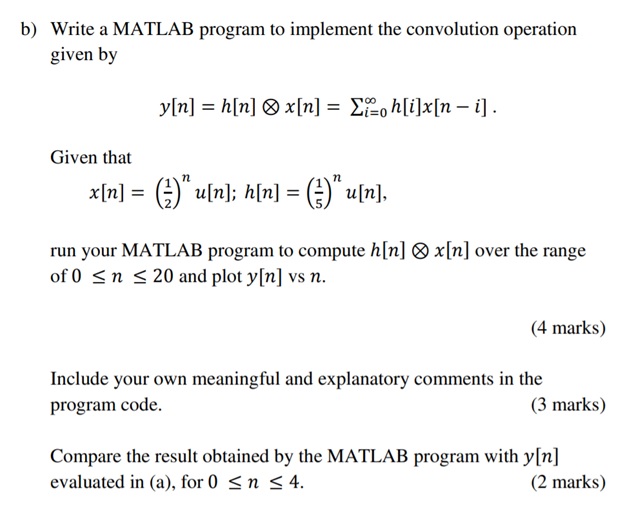
n=0:20;
x = (1/2).^n;
h = (1/5).^n;
y = zeros(1,41);
for i=1:21
for j=1:21
y(i+j-1) = y(i+j-1) + x(i)*h(j);
end
end
stem(n,y(n+1))
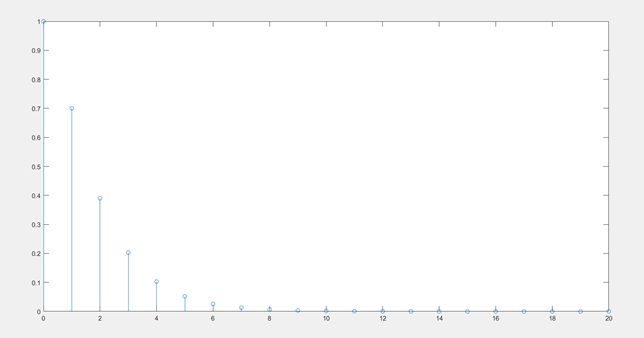
Comparision
|
n |
0 |
1 |
2 |
3 |
4 |
|
Matlab |
1 |
0,70 |
0,390 |
0,203000 |
0,103100 |
|
Calculated |
1 |
0.7 |
0.39 |
0.2 |
0.103 |
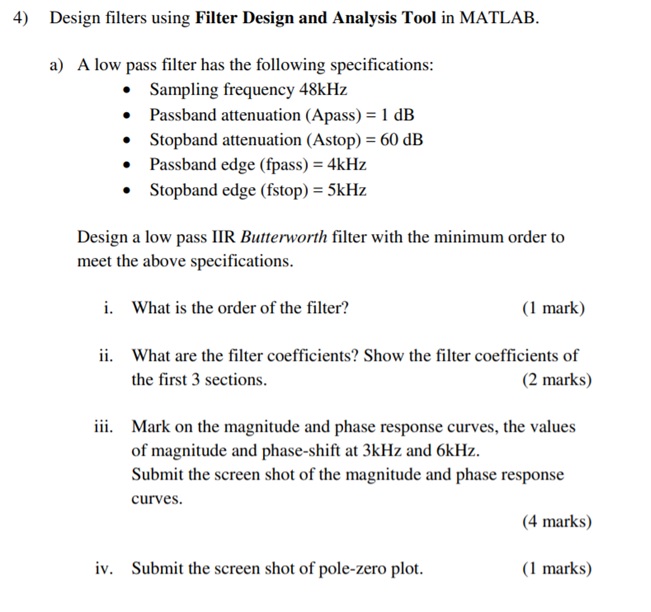
Fs = 48e3;
Fp = 4e3/Fs;
Fp_1 = 5e3/Fs;
Ap = 1;
Ast = 60;
N = 1;
F3dB = 0.09375;
d = fdesign.lowpass('N,F3dB',N,F3dB);
setspecs(d,'Fp,Fst,Ap,Ast',Fp,Fp_1,Ap,Ast);
Hbutter = design(d,'butter','SystemObject',true);
hfvt = fvtool(Hbutter, 'DesignMask', 'on','Color','white');
axis([0 1 -70 2])
legend(hfvt, 'Butterworth');
- Minimum order is 34
Magnitude
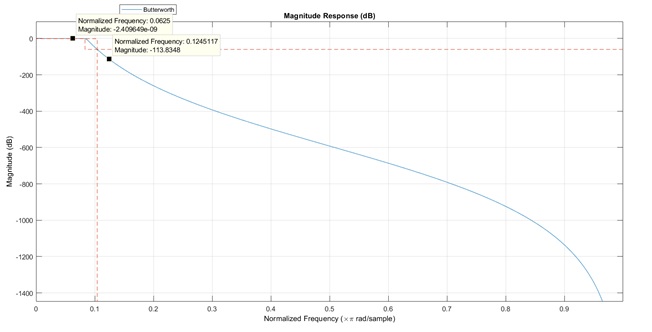
Phase
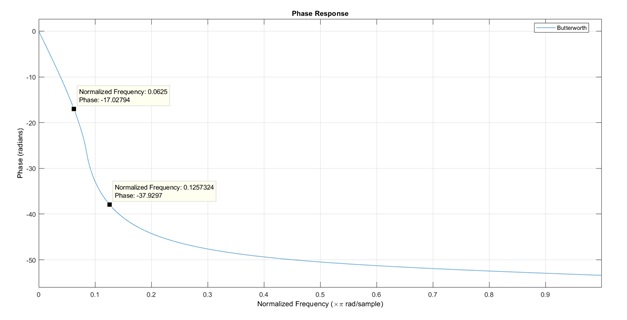
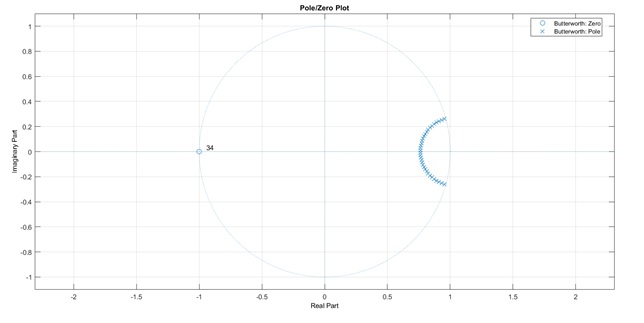

Fs = 48e3;
Fp = 4e3/Fs;
Fp_1 = 5e3/Fs;
Ap = 1;
Ast = 60;
N = 1;
F3dB = 0.09375;
d = fdesign.lowpass('N,F3dB',N,F3dB);
setspecs(d,'Fp,Fst,Ap,Ast',Fp,Fp_1,Ap,Ast);
Hbutter = design(d,'cheby2','SystemObject',true);
hfvt = fvtool(Hbutter, 'DesignMask', 'on','Color','white');
legend(hfvt, 'Butterworth');
- Minimum order is 12
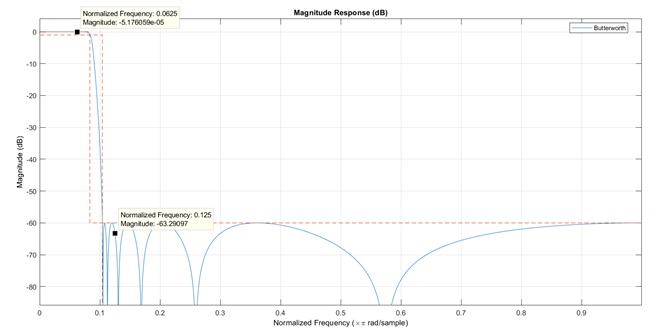
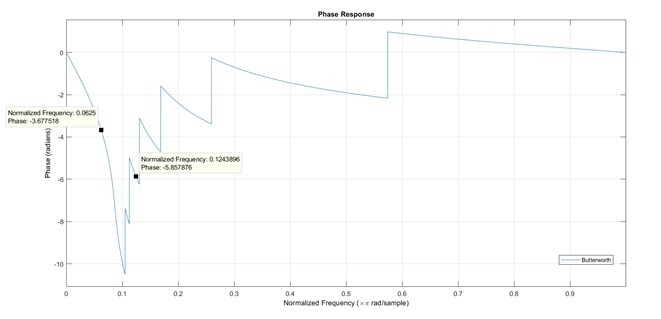
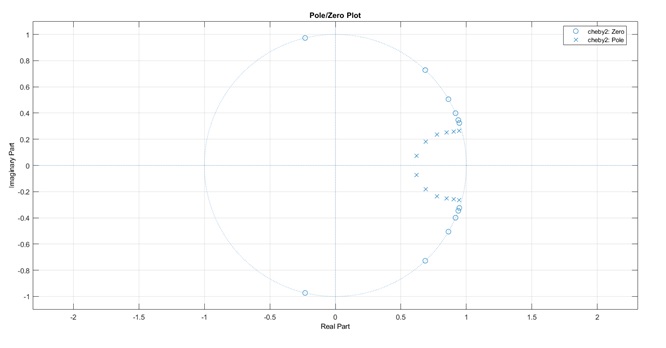

We can see that the order of butterworth filter is higher than Chebyshev filter. So there are less multiplication for calculating. But butterworth filter’s phase response is smoother than Chebyshev filter.
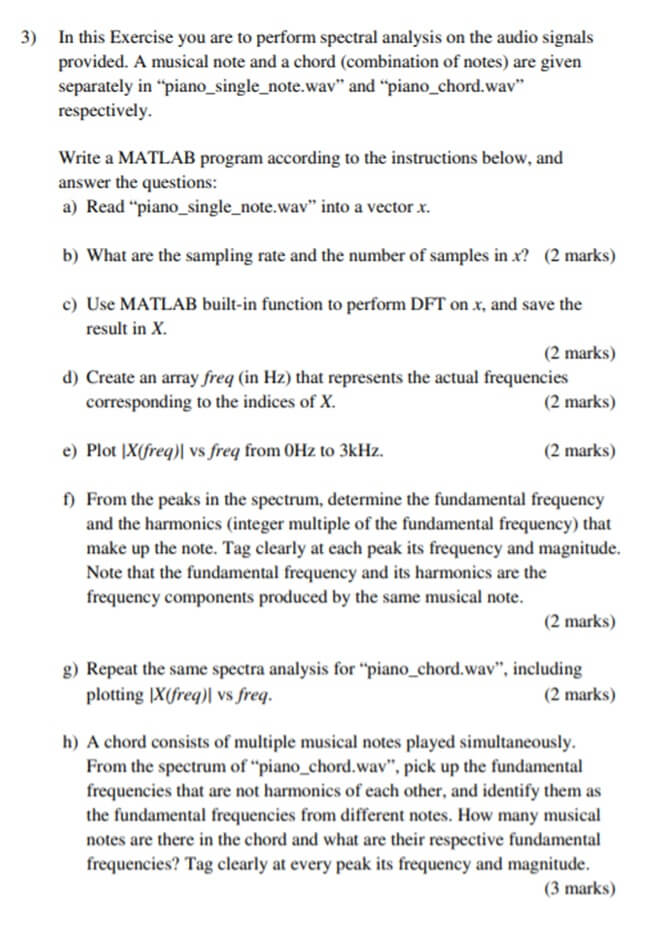
- [x,Fs]=audioread("piano_single_note.wav");
- Fs = 44100 Hz
- X = fft(x,length(x));
- freq = Fs*(0:length(X)-1)/(length(X));
- plot(freq,abs(X));
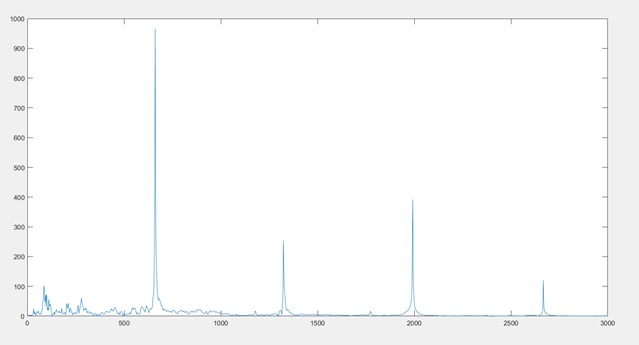
xlim([0 3000])
- frequencies; 86.61 , 660.6, 1323, 1992, 2667
- [x,Fs]=audioread("piano_chord.wav");
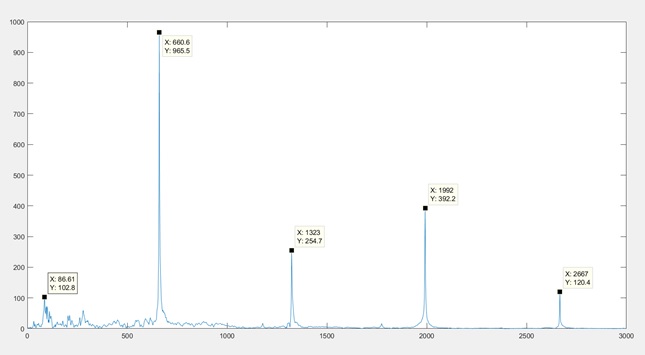
X = fft(x,length(x));
freq = Fs*(0:length(X)-1)/(length(X));
plot(freq,abs(X));
xlim([0 3000])
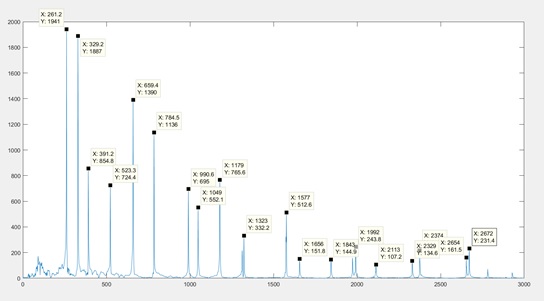
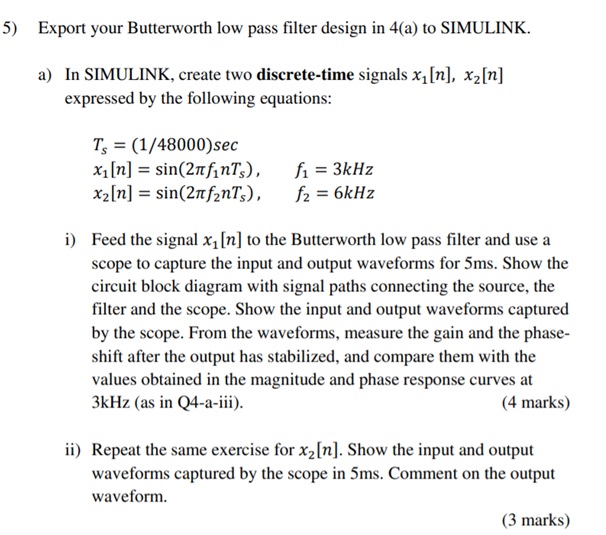

X1
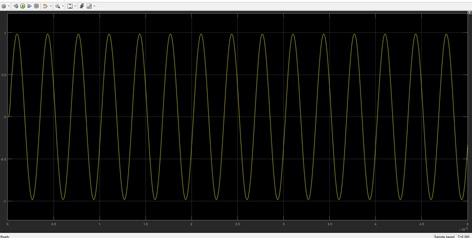
X2
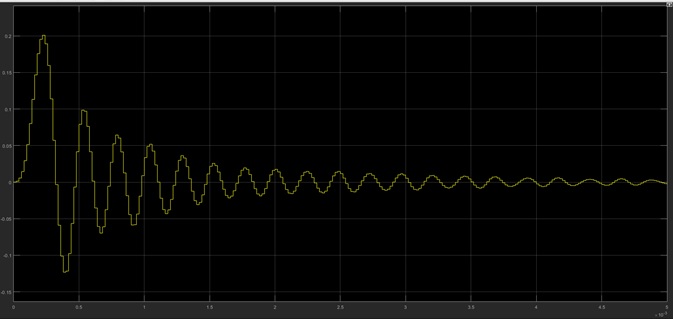
X1 signal is passing though low pass filter without any attenuation, but X2 signal is attenuating because of its frequency.
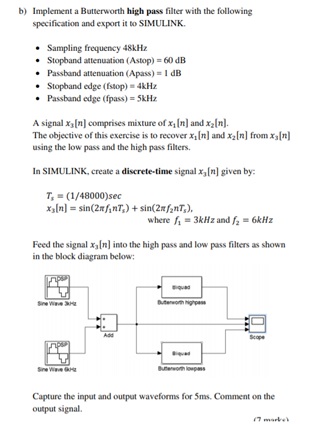
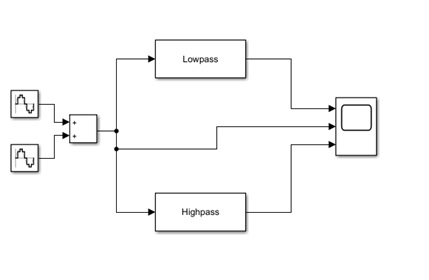
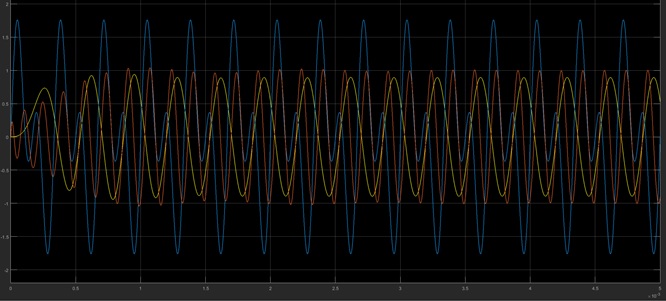
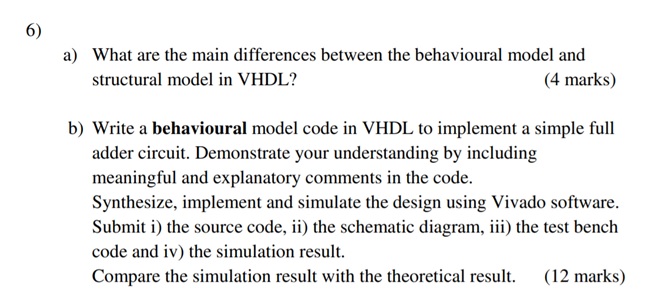
a) difference between behavioral and structural code in VHDL
in structural modeling uses gates and other primitives for defining the design circuit.
In behavioral modeling uses switch-case, for/while loop, if-else for defining the hardware
b)
LIBRARY ieee;
USE ieee.std_logic_1164.ALL;
ENTITY test_adder IS
END test_adder;
ARCHITECTURE behavior OF test_adder IS
COMPONENT adder_code
PORT(
A1 : IN std_logic;
A2 : IN std_logic;
Carry_in : IN std_logic;
Sum : OUT std_logic;
Carry_out : OUT std_logic
);
END COMPONENT;
signal Carry_in : std_logic ;
signal A1 : std_logic ;
signal A2 : std_logic;
signal Sum : std_logic;
signal Carry_out : std_logic;
BEGIN
uut: adder_code PORT MAP (
A1 => A1,
A2 => A2,
Carry_in => Carry_in,
Sum => Sum,
Cout => Cout
);
stim_proc: process
begin
wait for 1 ns;
A1 <= '1';
A2<= '0';
Carry_in <= '0';
wait for 1 ns;
A1 <= '0';
A2<= '1';
Carry_in <= '0';
wait for 1 ns;
A1 <= '1';
A2<= '0';
Carry_in <= '1';
end process;
END;
The code:
entity adder_code is
Port ( A1 : in STD_LOGIC;
A2 : in STD_LOGIC;
Carry_in : in STD_LOGIC;
Sum : out STD_LOGIC;
Carry_out : out STD_LOGIC);
end adder_code;
architecture adder of adder_code is
begin
process(A1,A2,Carry_in)
begin
Cout <= (A1 AND A2) OR (Carry_in AND A1) OR (Carry_in AND A2) ;
Sum <= A1 XOR A2 XOR Carry_in ;
end process;
end adder;


